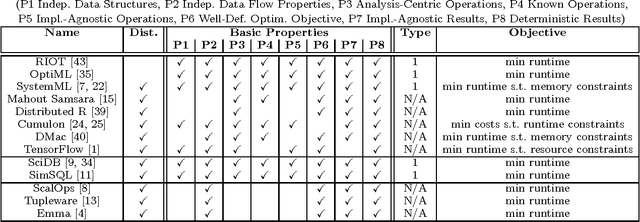Declarative Machine Learning - A Classification of Basic Properties and Types
Paper and Code
May 19, 2016

Declarative machine learning (ML) aims at the high-level specification of ML tasks or algorithms, and automatic generation of optimized execution plans from these specifications. The fundamental goal is to simplify the usage and/or development of ML algorithms, which is especially important in the context of large-scale computations. However, ML systems at different abstraction levels have emerged over time and accordingly there has been a controversy about the meaning of this general definition of declarative ML. Specification alternatives range from ML algorithms expressed in domain-specific languages (DSLs) with optimization for performance, to ML task (learning problem) specifications with optimization for performance and accuracy. We argue that these different types of declarative ML complement each other as they address different users (data scientists and end users). This paper makes an attempt to create a taxonomy for declarative ML, including a definition of essential basic properties and types of declarative ML. Along the way, we provide insights into implications of these properties. We also use this taxonomy to classify existing systems. Finally, we draw conclusions on defining appropriate benchmarks and specification languages for declarative ML.
 Add to Chrome
Add to Chrome Add to Firefox
Add to Firefox Add to Edge
Add to Edge